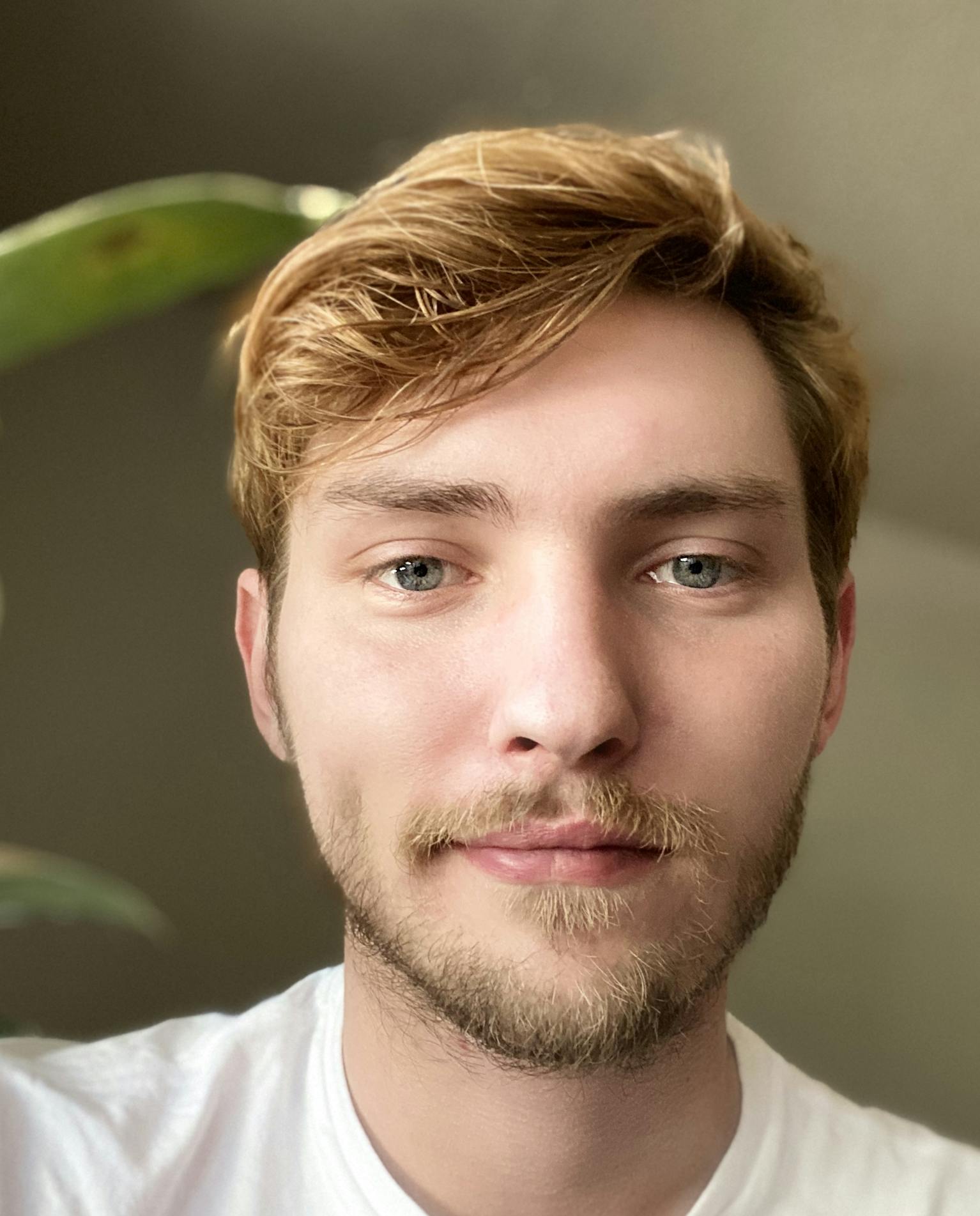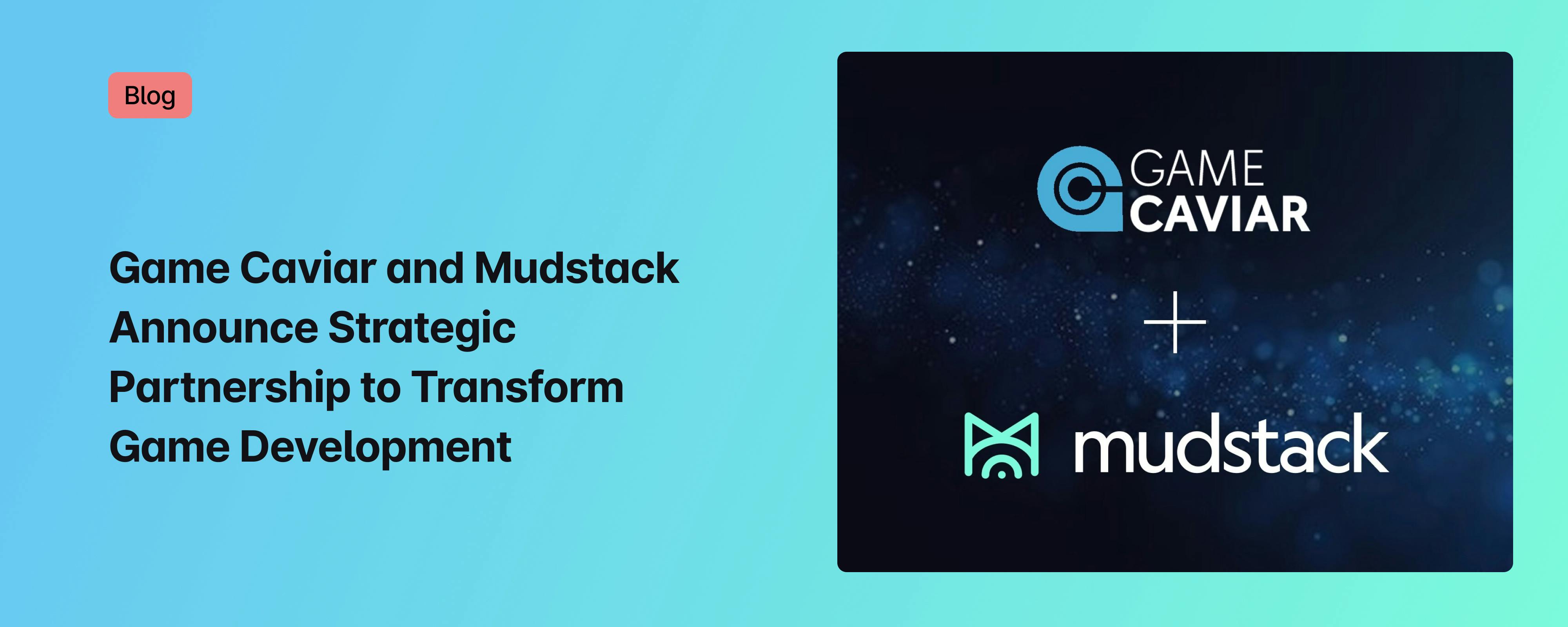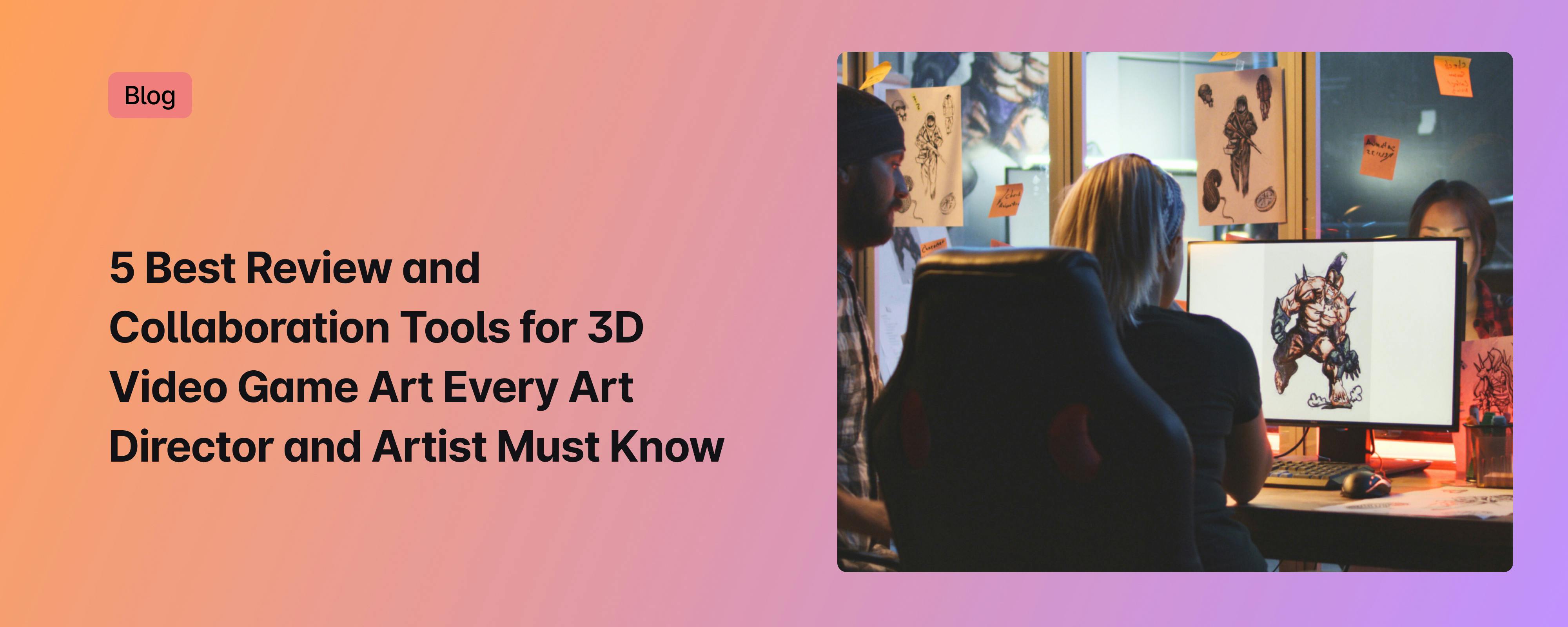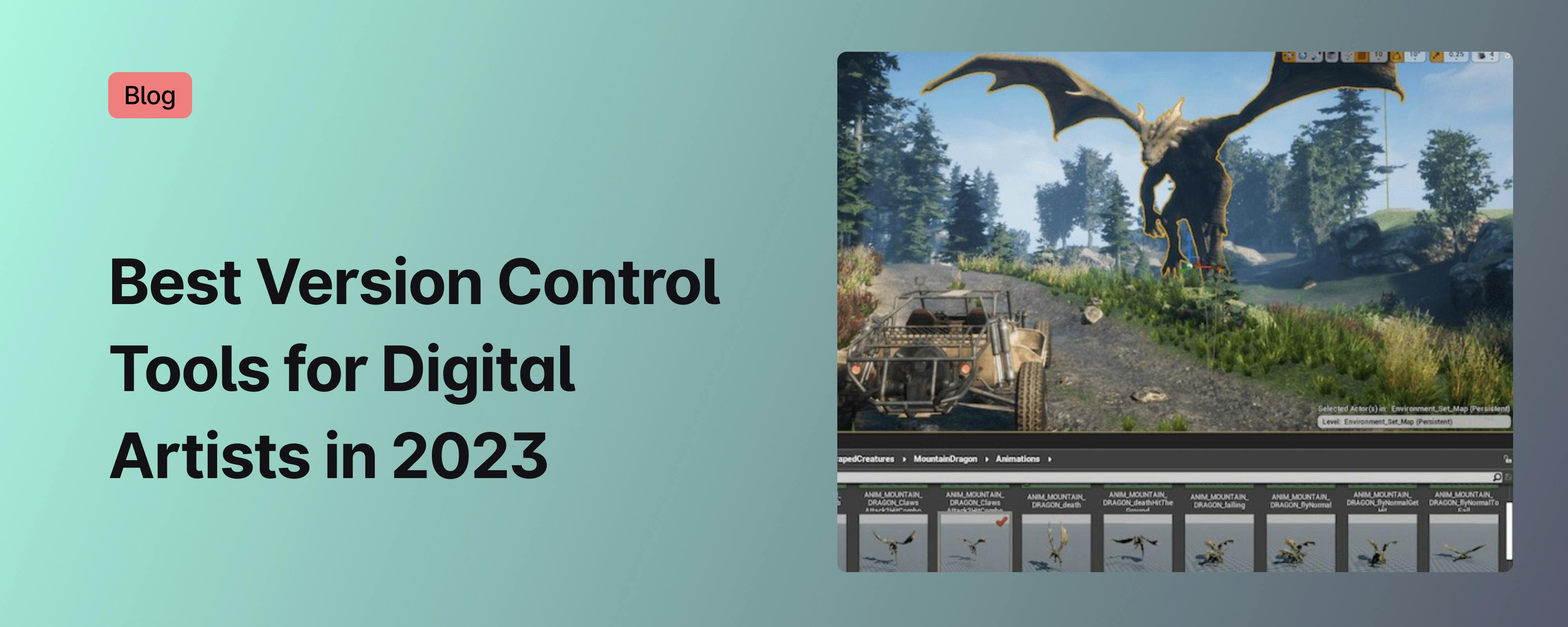Steel Sharpens Steel
Tramell Issac’s Journey in Art and Animation

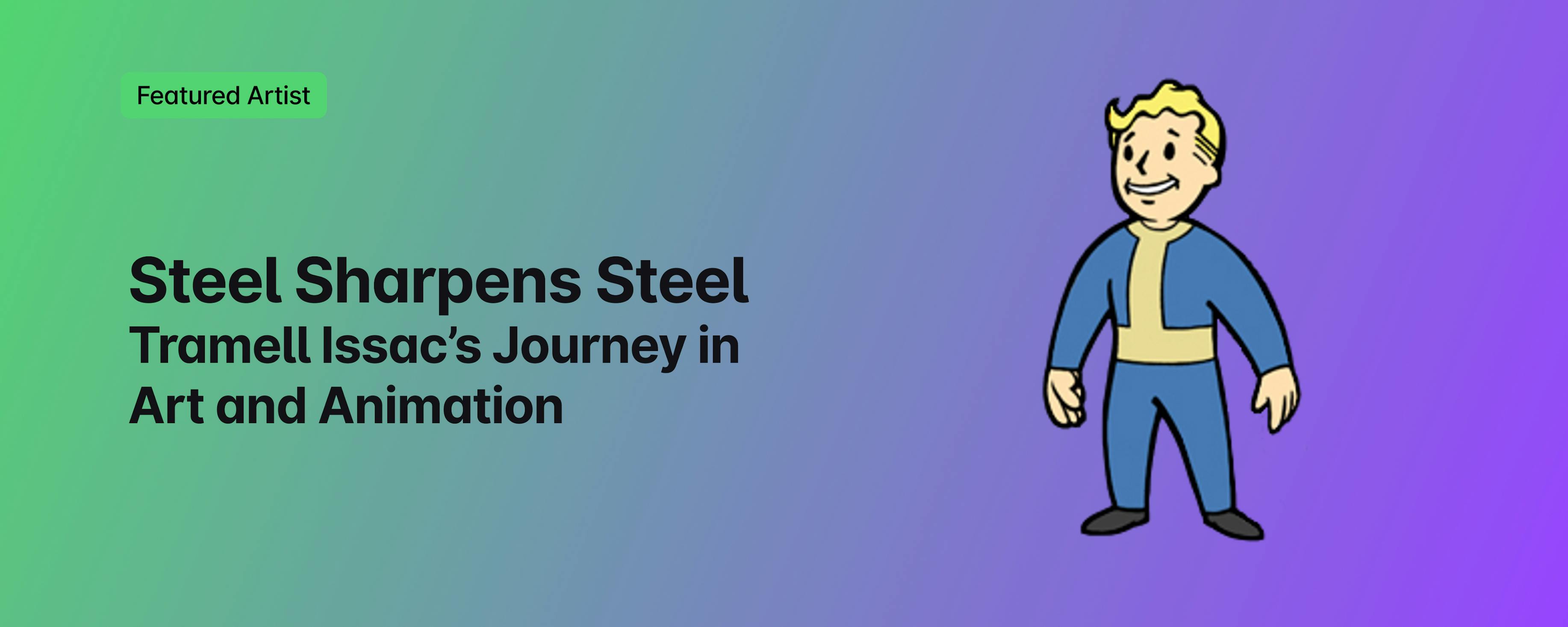
Discover the inspiring journey of Tramell Isaac, a prolific video game artist, developer, and mentor. From his early artistic pursuits to designing the iconic Vault Boy for Fallout and leading teams to success on major AAA games like Planetside 2, showcasing his unwavering dedication and belief in the power of human creativity amidst the advancing automation and AI landscape, serving as an inspiration to aspiring game developers worldwide.
Tramell Isaac's journey as a video game artist and developer has been full of grit, dedication, and passion for art and storytelling. From designing the iconic Vault Boy for Bethesda’s Fallout to leading teams to success on projects like Planetside 2 from Rogue Planet Games and Daybreak Game Company. As automation and AI advance, Isaac remains optimistic about the future of the industry and human creativity. His journey inspires aspiring game developers to recognize their strengths, learn and improve, and leave their mark on the world.
Time waits for no one
Tramell Isaac has always had a passion for art, and it's no surprise that he has made a career out of it. From a young age, his mother encouraged him to doodle and draw, and his interest in the craft only grew as he got older. He began reading Marvel comics and delving into different mediums such as painting, watercolor, gouache, and pottery. He looked up to comic book greats like Jim Lee, and Walt Simonson, and spent every Saturday admiring the work of artists who brought characters like Thor, Spiderman, and the Hulk to life.
.jpeg?ixlib=gatsbyFP&auto=compress%2Cformat&fit=max&w=2000&h=1410)
Thor Print 1986, Walt Simonson, a major early influence in Tramell Issac's art.
When it came time to graduate from high school, Isaac's mother wanted him to attend a four-year college. However, Isaac wasn't the best student and simply wanted to pursue his passion for art. “Time waits for no one, and life is hard enough without having a pile of regrets.” he acknowledges.
So, he decided to attend the Joe Cuban School, a school that originally focused on comic books but also offered courses in animation. The school had great connections to both Marvel and DC, and Isaac decided to focus on animation. However, the first two years of the program were heavily focused on graphic design and concept art.
Isaac took advantage of the opportunity to get out of St. Louis and see more of what the world had to offer. He immersed himself in the program, working on his portfolio and constantly striving to improve his skills. He knew that the art world is constantly evolving, and he needed to be a sponge, soaking up as much knowledge as he could.
Steel Sharpens Steel
As 3D technology became more prevalent in the industry, Isaac learned how to use 3D software to model and animate at the Joe Kubert Art School. “Steel sharpens steel,” he says, “and being around a lot of that talent, being around people who were a lot better than I am, it made me a better artist”.
After completing his education, Isaac landed a job at Tachyon Studios, a small studio based in Sierra, California. The move was a culture shock for Isaac, as he was now living in a tiny town in the remote Sacramento Valley. He worked on a game called Blood Magic, using licensed Dungeons and Dragons IP and creating 2D animations and sprites. Despite the demanding nature of the work, Isaac was determined to learn as much as he could and put together a strong portfolio.
Designing the Iconic Vault Boy for Fallout at Interplay
Tramell Isaac's work on the Fallout franchise began as a contractor, where he was responsible for creating the death animations for the game. His hard work and dedication paid off, as he earned the opportunity to work at Interplay, where he was tasked with designing the iconic Vault Boy character. “Everybody wants to do something to leave a mark on the world,” he says of his work on Vault Boy, “and I’ve done something that can be recognized in a lot of settings, so I’m proud of that part.
Isaac enjoyed his tenure at Interplay, where he was surrounded by highly skilled colleagues and had the opportunity to work on diverse projects. He used his expertise in 2D animation to contribute to the opening cinematic of Fallout, adding a cartoonish effect through rotoscoping over 3D animations.
.png?ixlib=gatsbyFP&auto=compress%2Cformat&fit=max&w=2000&h=3333)
.png?ixlib=gatsbyFP&auto=compress%2Cformat&fit=max&w=2000&h=3198)
The Art of Leadership
Early in his career, Isaac aspired to be an art director and turned down an opportunity at a company that later became Epic Games because he felt the offered position of "just an animator" wasn’t the career trajectory he envisioned for himself. In hindsight, Isaac admits that he was too prideful and lacked a clear understanding of what being an art director entailed at the time. He advises aspiring game developers to recognize their own strengths and be willing to fill in gaps on a team.
Isaac learned this lesson the hard way when, as a team leader, he held his colleagues to the same high standards he set for himself. While this approach earned him the respect of many team members, it also caused hurt feelings. Isaac emphasizes the importance of building a team that complements each other's skills and being willing to get hands-on and lead by example.
In his own words: "It's always been 'let's go do this' rather than 'go do this thing.' I would never ask somebody to do something if I didn't believe that I could do it myself." This approach served him well during his work on Planetside 2, which he successfully released in just 18 months. Isaac notes that he has never felt more relaxed and natural in a director's role than when he was able to get directly involved in the creative process alongside his team.
.jpeg?ixlib=gatsbyFP&auto=compress%2Cformat&fit=max&w=2000&h=1126)
PlanetSide 2 is an epic Massively Multiplayer first-person shooter developed by Rogue Planet Games and published by Daybreak Game Company in 2012.
The Shift to Remote Work Takes a Toll
The COVID-19 pandemic necessitated a widespread shift to remote work, posing unique challenges for businesses of all sizes. Maintaining team cohesion and engagement can be especially difficult for larger organizations, as the lack of in-person interaction can make it harder to foster strong working relationships. In an increasingly competitive job market, the temptation for employees to jump ship for a small pay increase at a new company may also be greater.
The absence of a dedicated office space can lead to distractions, and the alteration of routine can be disorienting. This has been the case for Isaac, a seasoned artist in the gaming industry with over 30 years of working experience. Isaac, who previously worked in a spacious solo office for two years, found it challenging to adapt to the lack of structure and separation from work that working from home entailed. He struggled with motivation, as the monotony of being in the same space all day made it hard to get work done outside of regular hours.
“I was always looking at the clock and trying to figure out if it was time to quit. I couldn't stand being in that room anymore, and the other byproduct was that because I didn’t want to go into that room, I didn’t do any work after. Working on your skills after work is how you keep sharp.” Isaac's experience highlights the difficulties that many have faced during the transition to remote work and the need to find ways to stay motivated and focused in this new environment.
If you have the resources, create a dedicated workspace to physically separate work and home life. Establish a routine similar to your pre-remote work routine, such as waking up at the same time and getting dressed for work. Set specific, measurable goals to track progress and take breaks throughout the day to recharge.
The Impact of AI and Technology on the Future of Digital Art
In the next few years, it is expected that much of the mundane work currently done by artists will be replaced by technology. "You can find generic things off the marketplace pretty much anywhere," says Tramell Isaac. "In the future, we'll have people generating prompts and having the AI generate things." This shift will allow artists to focus on more creative tasks, rather than tedious, time-consuming ones. It is also possible that characters and other assets will be generated using AI, further streamlining the animation process.
While the size of animation teams may decrease due to these advancements, Isaac believes there will always be a need for human creativity and innovation in the industry. "I don't think there will ever be a 'build game' button," he says. Isaac believes that these technologies will coexist with artists in the game development process and change how artists work.
.jpeg?ixlib=gatsbyFP&auto=compress%2Cformat&fit=max&w=2000&h=1118)
Tools like Promethean AI have the potential to radically change the way that digital environments are built in game engines.
Mudstack is the only asset management and collaboration platform custom-built for game studios and digital artists.
Mudstack is dedicated to improving asset management and collaboration together. You can join our Discord channel to speak directly with our product team or schedule a demo to show us your art production pipeline and see our software in action.
